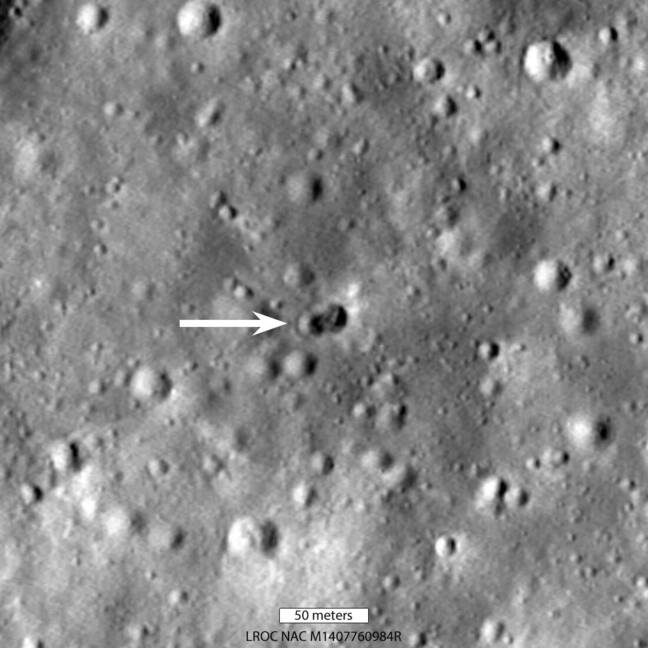NASA probe reveals strange hole created by suspected Chinese junk
When space junk crashed into the Moon earlier this year, it made not one but two craters on the lunar surface, judging from images revealed by NASA on Friday.
Astronomers predicted a mysterious object would hit the Moon on March 4 after tracking the debris for months. The object was large, and believed to be a spent rocket booster from the Chinese National Space Administration's Long March 3C vehicle that launched the Chang'e 5-T1 spacecraft in 2014.
The details are fuzzy. Space agencies tend to monitor junk closer to home, and don't really keep an eye on what might be littering other planetary objects. It was difficult to confirm the nature of the crash; experts reckoned it would probably leave behind a crater. Now, NASA's Lunar Reconnaissance Orbiter (LRO) has spied telltale signs of an impact at the surface. Pictures taken by the probe reveal an odd hole shaped like a peanut shell on the surface of the Moon, presumably caused by the Chinese junk.
"Surprisingly the crater is actually two craters, an eastern crater (18-meter diameter, about 19.5 yards) superimposed on a western crater (16-meter diameter, about 17.5 yards)," said NASA. No other rocket body lunar collision has ever created two craters to our knowledge.
The strange ditch suggests whatever struck the Moon had a peculiar structure.
"The double crater was unexpected and may indicate that the rocket body had large masses at each end. Typically a spent rocket has mass concentrated at the motor end; the rest of the rocket stage mainly consists of an empty fuel tank. Since the origin of the rocket body remains uncertain, the double nature of the crater may indicate its identity," the American space agency added.
Bill Gray, a developer building software for professional astronomers, who first predicted the impact, mistakenly thought the object was a rogue part from SpaceX's Falcon 9 rocket that launched NASA's Deep Space Climate Observatory. He later changed his mind and still believes it is from China's Long March 3C rocket.
"I'm a little puzzled by the double crater appearance. But I am in no way an expert on high-speed impacts, except to know that they can have some very strange results. In any case, I'm very pleased that the LRO folks were able to locate this," he said.
"I can't say the double crater proves things one way or the other," he told The Register. "That bit is a head-scratcher. I don't think this will tell us anything about whether it's the Chang'e 5-T1 booster. We basically have that nailed from other information. And the selenologists, who know a lot more about crater formation than I do, may come up with a completely different reason as to how a perfectly normal bit of rocket hardware could generate twin craters."
Wang Wenbin, a spokesperson for China's Ministry of Foreign Affairs, denied the chunk of space junk was from the rocket that launched the Chang'e 5 spacecraft in 2020. "According to China's monitoring, the upper stage of the Chang'e-5 mission rocket has fallen through the Earth's atmosphere in a safe manner and burnt up completely," he previously said in a statement.
But that rocket is not the same one astronomers believe struck the Moon. Gray believes it was from a different vehicle, one that launched the Chang'e 5-T1 spacecraft in 2014. His predictions of where the object might hit the Moon was off by a few kilometers. "The actual impact location was uncertain by about a dozen kilometers, largely because our last observations were made about four weeks before impact," he said.
"The problem was that spacecraft and space junk are gently pushed by sunlight, in a way that depends on how the objects are oriented as they tumble end over end. It's a small push, but over the four weeks, we knew it could push the object a dozen or so kilometers one way or the other, in a poorly-determined direction. It's a bit like predicting where an empty trash bag will go in a windstorm. You know it'll get blown downwind, but not exactly where it'll go." ®
- Mutton and Karlston
-

 2
2



Recommended Comments
There are no comments to display.
Join the conversation
You can post now and register later. If you have an account, sign in now to post with your account.
Note: Your post will require moderator approval before it will be visible.